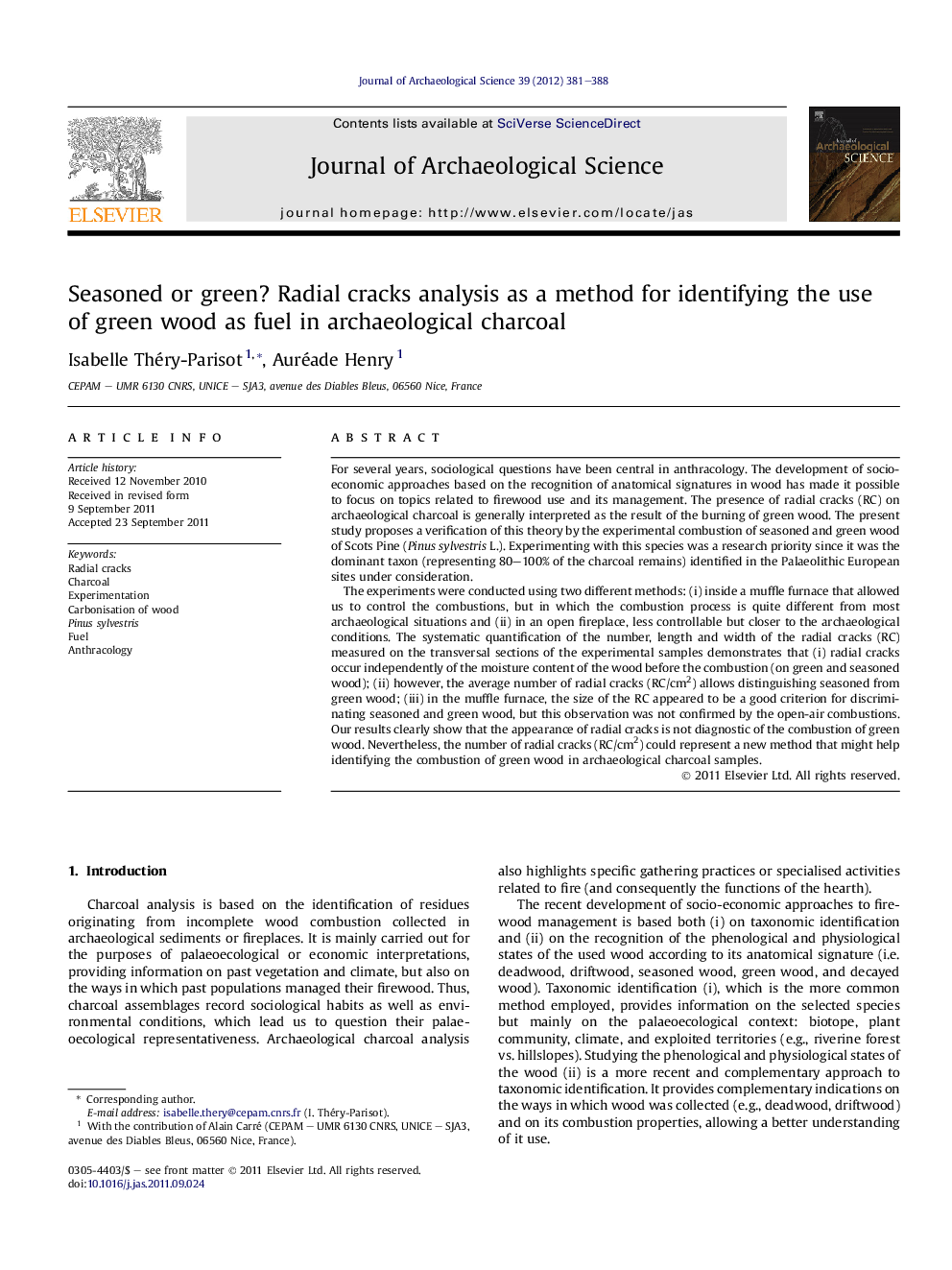| کد مقاله | کد نشریه | سال انتشار | مقاله انگلیسی | نسخه تمام متن |
|---|---|---|---|---|
| 1035891 | 943868 | 2012 | 8 صفحه PDF | دانلود رایگان |

For several years, sociological questions have been central in anthracology. The development of socio-economic approaches based on the recognition of anatomical signatures in wood has made it possible to focus on topics related to firewood use and its management. The presence of radial cracks (RC) on archaeological charcoal is generally interpreted as the result of the burning of green wood. The present study proposes a verification of this theory by the experimental combustion of seasoned and green wood of Scots Pine (Pinus sylvestris L.). Experimenting with this species was a research priority since it was the dominant taxon (representing 80–100% of the charcoal remains) identified in the Palaeolithic European sites under consideration.The experiments were conducted using two different methods: (i) inside a muffle furnace that allowed us to control the combustions, but in which the combustion process is quite different from most archaeological situations and (ii) in an open fireplace, less controllable but closer to the archaeological conditions. The systematic quantification of the number, length and width of the radial cracks (RC) measured on the transversal sections of the experimental samples demonstrates that (i) radial cracks occur independently of the moisture content of the wood before the combustion (on green and seasoned wood); (ii) however, the average number of radial cracks (RC/cm2) allows distinguishing seasoned from green wood; (iii) in the muffle furnace, the size of the RC appeared to be a good criterion for discriminating seasoned and green wood, but this observation was not confirmed by the open-air combustions. Our results clearly show that the appearance of radial cracks is not diagnostic of the combustion of green wood. Nevertheless, the number of radial cracks (RC/cm2) could represent a new method that might help identifying the combustion of green wood in archaeological charcoal samples.
► Do radial cracks (RC) on wood charcoal result from the combustion of green wood?
► To answer this question, we analysed 272 experimental charcoal samples of Scots Pine.
► Radial Cracks were identified on all – green and seasoned – wood samples.
► Thus, RC cannot be interpreted as resulting from the use of green wood in a hearth.
► But the mean number of RC per square millimetre allowed discriminating green wood from seasoned wood.
Journal: Journal of Archaeological Science - Volume 39, Issue 2, February 2012, Pages 381–388